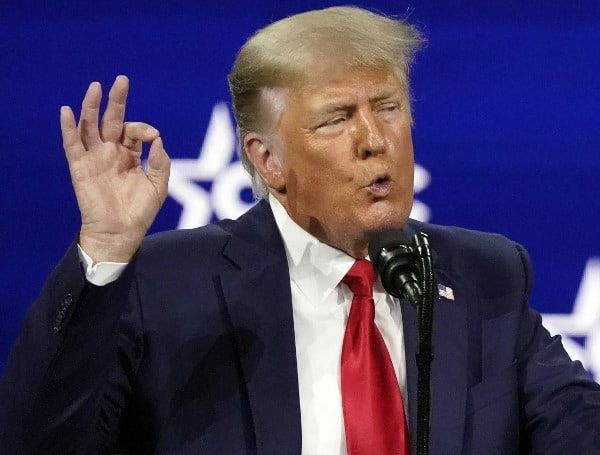Until the pandemic struck, it was widely evident, much to the Democrats’ chagrin, that former President Donald Trump’s tax cuts helped drive the U.S.
Until the pandemic struck, it was widely evident, much to the Democrats’ chagrin, that former President Donald Trump’s tax cuts helped drive the U.S. economy to its most robust point in a half-century.
But now a new analysis shows who benefited most from those reforms.
(Hint: It was not, as Democrats perpetually claim, the wealthy.)
In a report released last week, the Heartland Institute, a pro-capitalism think tank, looked at the first-year effects of the 2017 Tax Cuts and Jobs Act, which cut rates for all income groups as well as the corporate tax rate.
The group looked at IRS data for 2018 – the first full year the law was in effect – compared to the prior year.
The law “reduced average effective income tax rates for filers in every one of the IRS’s income brackets, with the largest benefits going to lower- and middle-income households,” the group found.
For example, the 27.5 million filers who made between $30,000 and $50,000 received an average tax cut of slightly more than 18 percent.
In terms of actual dollars, the tax cuts saved people who made between $30,000 and $40,000 an average of about $317. For those who made between $40,000 and $50,000, the average savings amounted to around $513.
The same was true in brackets immediately above those.
For instance, filers who made between $50,000 and $75,000 got a 17 percent tax cut and paid $864 less. For those between $75,000 and $100,000, the cut came to 15 percent, and the savings came to roughly $1,262.
In comparison, for earners who made between $1.5 million and $2 million, the law reduced the tax rate by about 5 percent. It shaved off about 4 percent for those between $2 million and $5 million, and for those who made more than $5 million, the tax rate dipped by 3.5 percent.
The other side of the coin is what share of the total tax burden was paid by each of these brackets.
Heartland Institute found that the proportion of the overall tax load fell for every bracket up to $200,000 a year, and increased for each group making more than that.
For example, the year before the tax cuts took effect those who earned between $200,000 and $500,000 paid 21.18 percent of all federal income taxes; after the tax cuts, their share increased to 21.30 percent.
For those who made $10 million or more, that ratio went from 10.07 percent to 10.61 percent.
To put that in perspective, in 2018 a family needed a total income of about $422,000 to rank among the 1-percenters.
The Heartland Institute report shows that prior to the tax cuts, those who made more than $500,000 paid a combined total of 38.94 percent of all income taxes. After Trump’s reforms, that grew to 41.5 percent.
In other words, the 1-percenters paid a larger share of overall national income taxes after Trump’s tax cuts than they did before them.
In the report, Justin Haskins, editorial director at The Heartland Institute, noted, “The Tax Cuts and Jobs Act may have made the tax code slightly more progressive. This finding contradicts the countless statements made by Democrats over the past four years criticizing TCJA as legislation that favored wealthier filers.”
Check out Tampafp.com for Politics, Tampa Local News, Sports, and National Headlines. Support journalism by clicking here to our GoFundMe or sign up for our free newsletter by clicking here.
Android Users, Click Here To Download The Free Press App And Never Miss A Story. It’s Free And Coming To Apple Users Soon.

COMMENTS